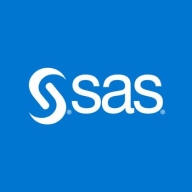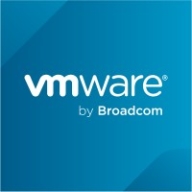

SAS Data Management and Spring Cloud Data Flow compete in the data management and integration tool space. SAS Data Management holds an advantage for comprehensive data handling, while Spring Cloud Data Flow stands out with real-time processing capabilities.
Features: SAS Data Management provides a comprehensive suite for cross-functional data management, including tools for ETL, CDC, and data federation. It offers robust data quality and integration with a flexible language and advanced reporting features. Spring Cloud Data Flow supports real-time streaming, microservices orchestration, and strong integration capabilities, with easy visualization and custom component development.
Room for Improvement: SAS Data Management is criticized for its high cost, inflexible licensing, and complex installation processes. Users also seek improved graphical interfaces and cloud integration. Spring Cloud Data Flow requires better documentation, especially for Kubernetes setups, improvements in the user interface, and stronger community support.
Ease of Deployment and Customer Service: SAS Data Management primarily relies on on-premises setups, with customer service support being less comprehensive post-acquisition. Spring Cloud Data Flow offers flexible deployment for on-premises and private cloud, though its support and community engagement need enhancement.
Pricing and ROI: SAS Data Management is suitable for large enterprises due to its high cost but offers significant ROI in regulated industries. Spring Cloud Data Flow is open-source and cost-effective, with lower pricing appealing to those seeking flexibility, but support services incur additional fees.
| Product | Market Share (%) |
|---|---|
| Spring Cloud Data Flow | 1.2% |
| SAS Data Management | 0.9% |
| Other | 97.9% |


| Company Size | Count |
|---|---|
| Small Business | 7 |
| Midsize Enterprise | 1 |
| Large Enterprise | 8 |
| Company Size | Count |
|---|---|
| Small Business | 3 |
| Midsize Enterprise | 1 |
| Large Enterprise | 5 |
Every decision, every business move, every successful customer interaction - they all come down to high-quality, well-integrated data. If you don't have it, you don't win. SAS Data Management is an industry-leading solution built on a data quality platform that helps you improve, integrate and govern your data.
Spring Cloud Data Flow is a toolkit for building data integration and real-time data processing pipelines.
Pipelines consist of Spring Boot apps, built using the Spring Cloud Stream or Spring Cloud Task microservice frameworks. This makes Spring Cloud Data Flow suitable for a range of data processing use cases, from import/export to event streaming and predictive analytics. Use Spring Cloud Data Flow to connect your Enterprise to the Internet of Anything—mobile devices, sensors, wearables, automobiles, and more.
We monitor all Data Integration reviews to prevent fraudulent reviews and keep review quality high. We do not post reviews by company employees or direct competitors. We validate each review for authenticity via cross-reference with LinkedIn, and personal follow-up with the reviewer when necessary.